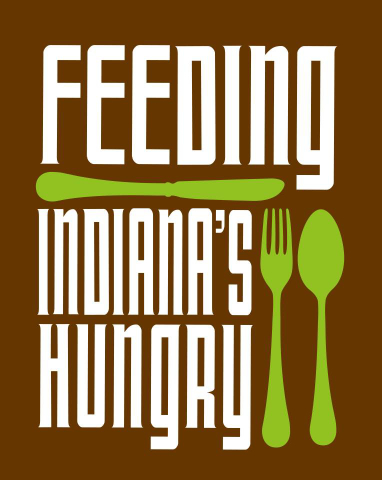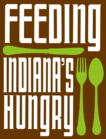Map the Meal Gap Child Food Insecurity 2011: Data at the Local Level for the First Time
Aug. 25, 2011 – Feeding Indiana’s Hungry and Feeding America, the nation’s largest domestic hunger relief organization, today released a new study which reveals that 24.5 percent of children under the age of 18 in Indiana are struggling with hunger. This is about 388,640 or one in four Hoosier children, spanning all 92 Indiana counties.
The study, “Map the Meal Gap: Child Food Insecurity 2011”, reveals that there are children struggling with food insecurity in every county in America. Nationally, while one in six Americans overall is food insecure, the rate for children is much higher: nearly one in four children is food insecure. The study shows that rates of child food insecurity in Indiana range from a low of seventeen percent, in Hamilton County to highs of 32 percent or more in Fayette, Elkhart, Adams, Miami, Crawford, and LaGrange Counties, touching all areas of the state.
Food insecurity is defined by the United States Department of Agriculture as the limited or uncertain availability of nutritionally adequate and safe foods or the ability to acquire acceptable foods in socially acceptable ways.
“Even the most positive numbers still indicate that a significant number of children are food insecure in every Hoosier county, which is unacceptable,” said Emily Weikert Bryant, Executive Director of Feeding Indiana’s Hungry, Indiana’s state association of food banks. “Food insecurity threatens the health, education, and workforce readiness of one in four Hoosier children. Even if we are not aware of anyone in need, the problem is much closer to home than we might think and it cannot be ignored.”
“Map the Meal Gap: Child Food Insecurity” provides the following data for Indiana in an interactive map format:
o The percentage of the population who is food insecure, by county. Statewide, 16 percent of the population is food insecure.
o The percentage of children in Indiana by county that is eligible for assistance from federal nutrition programs like Special Supplemental Nutrition Program for Women, Infants and Children (WIC), free or reduced-price school meals, and others. Statewide, 62 percent of food insecure children are eligible for these federal nutrition programs.
o The percentage of children in Indiana who are not eligible for federal nutrition programs like WIC, free or reduced-price school meals, and others. Statewide, 38 percent of children and families who are food insecure rely heavily on the charitable
sector for assistance.
The study is an important tool because it provides critical information for developing strategies to alleviate child hunger. The data will enable hunger relief providers to direct greater outreach for SNAP (food stamps) or free or reduced-price school meals where there are high percentages of eligible children. Likewise, the study shows where other resources need to be explored and secured in areas where families have just enough income to be financially ineligible for federal nutrition programs but clearly still have a need for food assistance.
“Map the Meal Gap: Child Food Insecurity 2011” shows what the hunger relief community has known but could not quantify: that hunger is everywhere in our state and country, it is not directly related to poverty, but is more closely tied to unemployment and underemployment, a problem many Hoosiers continue to experience. Hoosiers in need of assistance are working or seeking work, but are not earning enough to provide the basic necessities for their family,” said Bryant.
By providing additional details about the face of child food insecurity at the county level, “Map the Meal Gap: Child Food Insecurity 2011” will enable food banks, the community based agencies they serve and policy makers to redefine approaches in addressing needs of hungry children and their families and develop more effective policy solutions.
This research is supported by ConAgra Foods Foundation. The ConAgra Foods Foundation funded this research with the goal of advancing the collective understanding of child hunger in America, so that resources at the local and national level could be better leveraged to help children and families in need.
The research is based on “Map the Meal Gap 2011: Food Insecurity Estimates at the County Level”, supported by the Howard G. Buffett Foundation and Nielsen.



